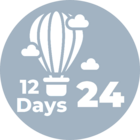Solved
Combine Featurereader and neighborfinder
Combine Featurereader and neighborfinder
Best answer by erik_jan
So, if you want to select only those points from the PostGis database that are within or close to a polygon you want to enlarge the polygons by a margin (using the Bufferer) and use those polygons as Initiator for the FeatureReader to read the points. For performace reasons you might even want to replace the polygons by bounding boxes before enlarging them (using BoundingBoxReplacer).
This post is closed to further activity.
It may be a question with a best answer, an implemented idea, or just a post needing no comment.
If you have a follow-up or related question, please post a new question or idea.
If there is a genuine update to be made, please contact us and request that the post is reopened.
It may be a question with a best answer, an implemented idea, or just a post needing no comment.
If you have a follow-up or related question, please post a new question or idea.
If there is a genuine update to be made, please contact us and request that the post is reopened.
Enter your E-mail address. We'll send you an e-mail with instructions to reset your password.













